Chapter 1
Developing Your Overall Digital Strategy
IN THIS CHAPTER
 Formulating your business goals
Formulating your business goals
 Picking your key performance indicators (KPIs)
Picking your key performance indicators (KPIs)
 Catching customers with the Five Cs
Catching customers with the Five Cs
 Serving your customers using content
Serving your customers using content
 Building product habits
Building product habits
Companies have finally recognized what their customers have always known. If they can’t find the content that makes your product easy to use and enjoy, they are off to seek out your competitor. You’ve missed the opportunity to impress them or, in some cases, even get on their radar screen.
This chapter covers what goes into creating a digital marketing strategy. Without it, you can’t get the traction you need to beat the competition. You also discover each of the “Five Cs” that must be included to make your strategy complete.
Understanding the Components of a Digital Marketing Strategy
To understand how the pieces of a digital marketing strategy fit together, the components are organized into a framework called the Five Cs. They are (1) company strategy; (2) customer experience; (3); content creation (4), channel promotions, and (5) check-back analysis.
Working with the Five Cs framework helps you cover all the bases as you create your digital marketing strategy and implement your plan
Determining the company strategy
The first C is company strategy. To create a digital marketing strategy, you need to begin by looking at your company’s business goals. The question to ask yourself and your team is, “What do we want the company to achieve and how do we make it happen?”
You should direct your attention to your goals and business case for undertaking this effort. To that end, Book 1 covers the following topics:
- Create a digital marketing strategy. Several components go into a successful marketing strategy. Keep reading this chapter to find out more as well as the subsequent chapters in this book.
- Get your customers’ attention. Marketers are fiercely competing for your customers’ attention. Find out how to capture it in Book 1, Chapter 2.
- Understand your business model and your brand. Learn about a variety of business models and how to determine what “job” your product does. You look at brand components in Book 1, Chapter 3.
- Decide which marketing campaign to create. After you understand your goals, you can choose the right marketing campaign. See what to consider in Book 1, Chapter 4.
- Develop the strongest offers. You look at how to turn leads into customers by crafting winning offers in Book 1, Chapter 5.
Uncovering the customer experience
The second of the Five Cs is customer experience covered in Book 2. You need to learn what your prospects will think, feel, and do when interacting with your brand. The question for your marketing team to ask is, “Who are our prospects and how will we serve them as customers?”
You must define your audience and analyze the customer experience. You do this with the following:
- Collect and analyze customer data. Before you define your audience, you need to evaluate the kind of data you will use. In Book 2, Chapter 1, you look at the benefits and challenges you may face when dealing with big data to analyze your audience.
- Create personas. You define the characteristics of your perfect audience by investigating several different types of information. Find out what actions you need to takein Book 2, Chapter 2.
- Develop the buyer journey. You want to understand the journey your prospect takes from being interested in your product to sold on it. Book 2, Chapter 3 looks at the buyer’s mindset and gives you a model to help you document your customer’s touchpoints.
- Assist with sales enablement. Your sales team is facing an empowered customer. Find out in Book 2, Chapter 4 how your content can assist in making the job easier and more powerful. You can also determine where your company falls on the content maturity scale.
Creating quality content
The third C is content creation, which is covered in Book 3. You need to focus on creating quality content (based on your story) that you know your customers want and need. The question to ask is, “How will we create quality content, who will do it, and what will that content be?”
You need to develop a strategy for content, define your messaging, and establish your systems and governance rules. The chapters in tBook 3 take you through:
- Create a content strategy. You should have both a content plan and a content marketing strategy. In Book 3, Chapter 1, you see how to take an audit of your content to determine what you have and how you can leverage it to develop a true corporate asset.
- Develop content types. You want to ensure that you take full advantage of all the types of content available to you. Book 3, Chapter 2 covers various types including long- and short-form original content, curated content, and visual content.
- Know what your customers want. You learn how marketing funnels help you reach your entire audience. See how in Book 3, Chapter 3.
- Write and storytell. You have a story to tell that will connect with your audience. How do you incorporate it into your content? See Book 3, Chapter 4 to get a feel for the science behind why stories work and how to develop your own powerful corporate stories.
- Create processes and systems. You know that without a documented workflow and procedures, your content marketing efforts fail. Book 3, Chapter 5 spells out the roles and responsibilities of your content team and shows you the benefits of using an editorial calendar.
- Target content for each audience. Your company needs to build a resource library that customers can access without contacting you. Find out what you should put in that library in Book 3, Chapter 6.
Developing channel promotions
The fourth C is channel promotion, which you find in Book 5. To have your content make the greatest impact, you want to decide where and by whom your content will be distributed. The question to ask is, “How will our prospects and customers find our content so that they can choose us?”
You want to make your content easy to find and share. You need to know how to promote your content so that prospects can find it.
- Use paid, earned, shared, and owned media for maximum reach. Making the most of all types of media is the only way to ensure that your brand voice will be heard. Look to Book 5, Chapter 1 to learn about the value of these types of media and why earned media is gaining in importance.
- Use search marketing. Although search marketing is constantly changing, you can’t ignore its value. See Book 5, Chapter 2 to see what you need to know.
- Create sharable content. Sharing is key to any content plan. Book 5, Chapter 3 looks at why you should embrace shareability as a strategy and borrow from journalism’s five Ws and one H (who, what, why, where, when, how) as applied to sharing.
- Add an email marketing campaign. Everyone loves and hates email. But it’s still a very important tactic to use to reach customers. See what you need to do to use it effectively in Book 5, Chapter 4.
Deploying check-back analysis
The fifth C is check-back analysis, which is covered in Book 9. The focus here is on the metrics you choose to determine successes or failure. The question to ask is, “Have we met our goals?”
You want to reevaluate your plans and make revisions as necessary:
- Reassess your business model and brand value. You know that it’s important to frequently assess how things are working. Find out how you can determine whether business model changes are warranted and whether you need to revise brand plans in Book 9, Chapter 1.
- Reexamine your content marketing strategy. Obviously, a determination of how well your content marketing strategy is working is essential. See why even failing is a springboard to success in Book 9, Chapter 2.
- Measure success. If you’re tracking key accounts you need to reassess your goals for each one. See what you need to do in Book 9, Chapter 3.
- Track metrics. It’s helpful to gauge potential new opportunities as you track your metrics. See what’s involved with that in Book 9, Chapter 4.
- Optimize campaigns for return on investment (ROI). Using split testing and analyzing the speed of your pages is key to optimizing your campaigns. Find out how how do this in Book 9, Chapter 5.
So that’s an overview of the Five Cs. Each of the books encompassing them includes far more information and working plans than listed here. If you do the hard work required to create and implement your plans, you can expect to be on the road to content marketing success.
Communicating Your Mission
When you hear the term mission statement, you probably want to skip to the next section in this chapter. Completely understandable. At some point while you were in school, you were taught about mission statements and you found it boring. But the good news is that now, when you look at communicating the reason your company exists, a mission statement becomes important and personal.
Crafting your statement
In his book Epic Content: How to How to Tell a Different Story, Break through the Clutter, and Win More Customers by Marketing Less (McGraw-Hill Education, 2013), Joe Pulizzi, “the godfather of content marketing” and founder of the Content Marketing Institute (see Figure 1-1), offers an easy way to craft a content marketing mission statement.
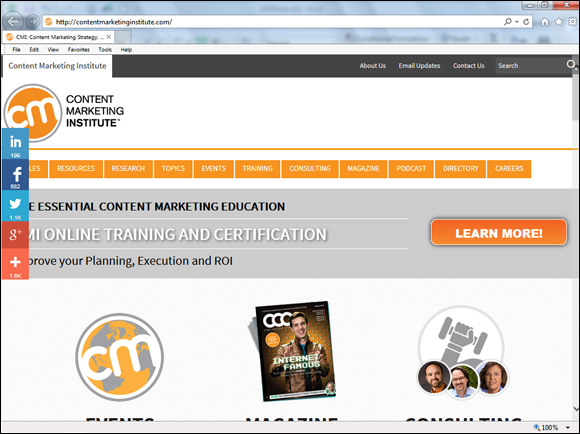
FIGURE 1-1: Content Marketing Institute.
Pulizzi says to break down the statement into three parts:
- Whom you will serve: The core audience you’re targeting
- What solution you will offer: What you will deliver to that audience
- The outcome: How it will make them better
Here’s a breakdown of what goes into each of these sections:
-
The target audience: Before you determine the characteristics of your personas (Book 2, Chapter 2 covers personas in detail), you have to identify the niche(s) that work best for you. Aside from doing market research, you need to pick a very narrow group to target. When defining their niche, some companies are afraid to rule out anyone. They think that they may eliminate an important customer segment. But narrowing down the target is exactly what makes this tactic so powerful. By defining your niche carefully, you know that you’re speaking to the people who are interested in hearing your message.
 You can always add segments later, but remember this: When you target everyone, you don’t connect with anyone.
You can always add segments later, but remember this: When you target everyone, you don’t connect with anyone. - Your solution: This may seem like the simple part of the formula, but it’s only deceptively simple. You know what your product does. But in your mission statement, you want to communicate the solution as a promise to meet your customer’s needs.
- Your desired effect: In this section, you want to spell out what need your product satisfies. Clearly identifying this need is key to determining whether customers believe you fulfilled your promise to them.
As you look at your company’s goals, you want them to align with your content marketing strategy. If those goals don’t align with your strategy, you need to determine what revisions to make.
Reviewing real mission statements
Now that you’ve looked at what goes into creating a mission statement, you can see how it plays out in real life. In her article “12 Truly Inspiring Company Vision and Mission Statement Examples,” as shown in Figure 1-2, Lindsay Kolowich gives some examples to work with (http://blog.hubspot.com/marketing/inspiring-company-mission-statements).

FIGURE 1-2: HubSpot blog.
You can deconstruct a few that hit the mark by looking at their mission statements and seeing how the formula fits.
-
Patagonia mission statement: “Build the best product, cause no unnecessary harm, use business to inspire and implement solutions to the environmental crisis” (
http://Patagonia.com; see Figure 1-3).- Who the company serves: People who love outdoor activities
- What the solution is: High quality clothing to fight the elements
- What the outcome is: Deliver excellent clothing under superior working conditions that do not damage the environment
This is an effective one-sentence mission statement that is clear and defines Patagonia’s commitment to its customers and the environment.
-
Warby Parker mission statement: “Warby Parker was founded with a rebellious spirit and a lofty objective: to offer designer eyewear at a revolutionary price, while leading the way for socially-conscious businesses” (
http://warbyparker.com; see Figure 1-4).- Who the company serves: Fashion-forward eyeglass wearers
- What the solution is: Designer eyewear at a revolutionary price
- What the outcome is: Fairly priced eyewear to customers and a program that teaches people in underdeveloped countries to prescribe free eyewear to those in need.
This is another one-sentence mission statement that succinctly communicates Warby Parker’s desire to provide well-priced designer eyewear and a commitment to help fund socially-conscious businesses.
-
Ikea mission statement: “At Ikea our vision is to create a better everyday life for the many people. Our business idea supports this vision by offering a wide range of well-designed, functional home furnishing products at prices so low that as many people as possible will be able to afford them.”
- Who the company serves: People who want well designed products but can’t afford expensive items.
- What the solution is: Functional home products at low prices
- What the outcome is: Create a better everyday life for as many people as possible.
With this statement Ikea clearly communicates its desire to help people afford well-designed products.
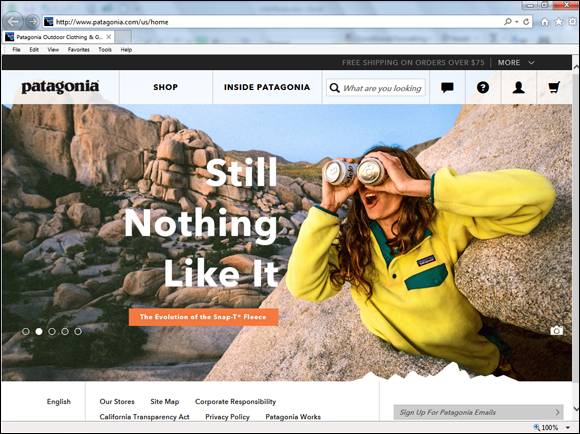
FIGURE 1-3: Patagonia.

FIGURE 1-4: Warby Parker.
These companies make crafting mission statements look easy. But they probably spent a lot of time and effort to get them just right. A mission statement can help employees serve their customers and feel pride in their organization. So for both your employees and your customers, consider adding your mission statement to your website.
In her article, Kolowich quotes Simon Sinek, author of the book, Start With Why, as saying, “Customers will never love a company until the employees love it first.”
Establishing Your Goals
After you’ve established your mission statement, you can focus on your company goals. In Book 1, Chapter 3, you take a close look at your business model and create a business model canvas. Doing the exercises in that chapter should prepare you to articulate your goals. The following sections give you a brief look at how to formulate goals.
Uncovering your goals
When looking at formulating your own goals, it can be useful to see what other marketers report were their top goals achieved for B2B content marketing. According to the 2019 report by the Content Marketing Institute/Marketing Profs, (https://www.slideshare.net/CMI/b2b-content-marketing-2019-benchmarks-budgets-and-trendsnorth-america) (see Figure 1-5), the top organizational goals achieved by B2B content marketing are the following:
- Brand awareness: 81 percent
- Educate audiences: 73 percent
- Build credibility/trust 68 percent
- Generate demand/leads: 68 percent
- Nurture subscribers/audiences/leads: 58 percent
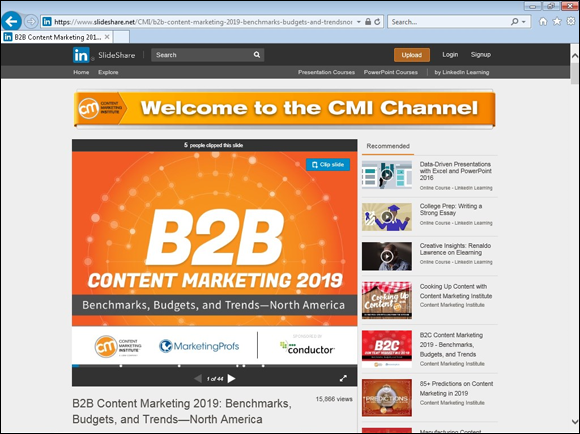
FIGURE 1-5: 2019 Benchmarks, Budgets, and Trends — North America Survey.
The report indicates that 2019 was the eighth year that brand awareness came in at the top spot.
Next you find out how to set measures to track your goals.
Picking KPIs
After you establish your goals, you need to develop key performance indicators (KPIs). KPIs are the measures you choose to help you determine whether you’re reaching your business goals. You need them to keep your strategy on track. If you don’t measure yourself against your business goals, you won’t know whether your content marketing strategy is working and supporting your larger business goals.
To help you think about how to craft your KPIs in relation to your marketing goals, check out Table 1-1. You can apply the table to your marketing plan as well. List your goals and then choose some metrics. Then refer to this list when you check your progress.
TABLE 1-1 Choosing KPIs
|
CMI/Marketing Profs B2B Top Goals |
Suggested Metrics |
|
Increase brand awareness |
Social media shares, social media likes, email forwards, referral links |
|
Lead generation Lead nurturing |
Blog signups, blog comments, conversion rate, form completions |
|
Increase engagement |
Comments, page depth (how many pages consumed), downloads, page views, back links, time on site, click through rate |
|
Grow sales revenue by X percent |
Revenue influenced by content (which content was consumed before sale), offline sales |
|
Improve customer retention/loyalty |
Bounce rate, followers, retention rate |
|
Encourage customer evangelism |
Social media shares, comments, follower count, word of mouth |
|
Increase upsells/cross-sells |
Measure conversions in shopping cart and on landing pages, number of conversions |
Expanding Your Corporate Mindset
Every company has its own culture. The culture dictates how and why tasks get done. If your culture is a positive one, you’re probably focused obsessively on serving your customers, and you’re proud of your reputation. Have you thought about how your culture, reputation, and customer service impact your content marketing strategy? You can examine that next.
Creating a culture of content
Does your company have a culture of content (CoC)? Content creation and marketing is front and center in today’s businesses, so it’s no surprise that it could become part of an organization’s DNA.
The term CoC was popularized by the Altimeter Group’s authors Rebecca Lieb and Jessica Groopman in their study cited here: http://rebeccalieb.com/blog/2014/12/04/the-three-components-of-a-culture-of-content. (See Figure 1-6.)
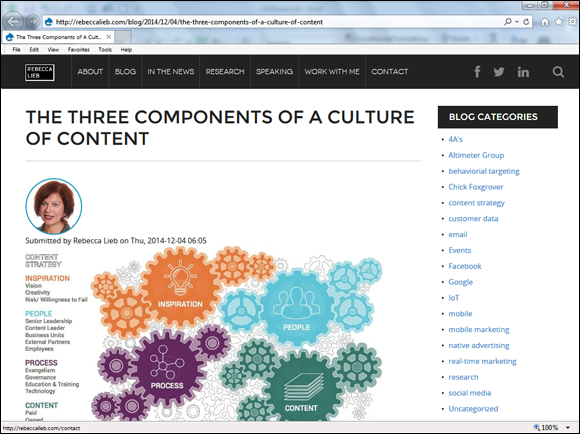
FIGURE 1-6: Rebecca Lieb.
So what is a culture of content? It’s one in which:
- Content is championed.
- Content is shared throughout the organization.
- People are encouraged to be creative with content.
- Staff from every department can contribute content.
- The company has a tolerance for risk and failure with content.
Does this sound like your organization? Or a better question might be, “Wouldn’t you like your organization to function like this?” Trying to move your organization in this direction would be worthwhile. Your organization can benefit from a CoC in several ways. It can get:
- Better quality content (and quantity): People who are encouraged to be creative and become part of a content team create better content and contribute more often.
- More content sharing: People who are proud of the content the organization (and they) are creating are more likely to share it.
- A competitive edge: A company that champions content and places a high value on its creation stands out from the crowd.
- More valuable data to analyze: More and better content provides valuable data.
How can you foster a CoC? Dawn Papandrea details in her article, “How to Create a Culture of Content Marketing from the Top Down” (http://www.columnfivemedia.com/how-to-create-a-culture-of-content-marketing-from-the-top-down; see Figure 1-7), some of successful entrepreneur Marcus Sheridan’s (https://marcussheridan.com/) steps for creating a content culture.
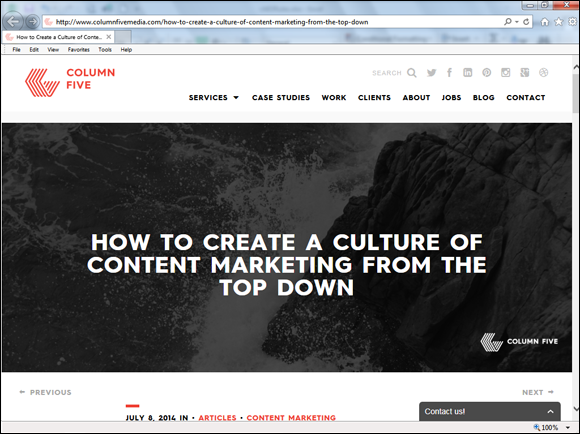
FIGURE 1-7: Column Five Media.
Here are a few of those eight tips:
- Get buy-in from the top. Make sure to have support from your executives if you’re going to undertake a content marketing strategy. No project can survive the disinterest of management.
- Share the same vision. All good company cultures thrive because they have a shared vision of what they want to achieve. This is especially crucial for a culture that needs to rely on content contributions from staff.
- Appoint a Chief Content Officer. You need a champion to encourage content marketing efforts. Have a person dedicated to the program’s success. It’s important to show employees that you’re investing in the program.
- Support and maintain the content culture. Make sure that everyone on the team is convinced of the importance of content and keeps the culture at the forefront.
Most companies that have a content culture agree on one important ingredient: training. They believe that without training their staff to recognize, create, and share content of value, they will not succeed.
Thinking about reputation
The importance of reputation is obvious to almost everyone. But you probably don’t think about how your company’s reputation contributes to the acceptance of your content and vice versa. When readers see your branded content, they need to make an immediate decision. They have to decide whether you’re trustworthy enough to continue reading. If they decide that you’re not, they click away. If they see a review of your business, they can be swayed by negative comments. But how much does this really matter to your bottom line?
According to a press release by IC Media Direct, shown in Figure 1-8, “It has been calculated by the Harvard Business School that each star in a Yelp rating increases a business' sales by 5 to 9%. And a bump up from 3.5 to 4 stars on Yelp typically results in a 19% increase of restaurant bookings during peak business hours.”
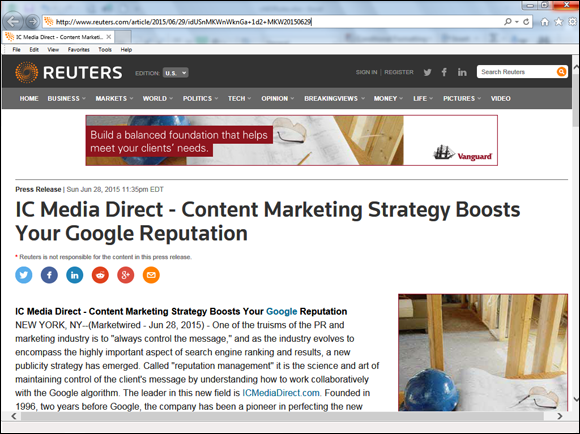
FIGURE 1-8: IC Media Direct.
That’s quite an impact. Yet companies are typically very lax about reputation management as part of their content marketing strategy.
You need to monitor online content to ensure that your reputation stays intact. Here are a few habits to consider building into your content marketing strategy:
- Continually listen. The conversation about your business is going on 24 hours a day. You need to be ready to respond to anything that could affect your customer’s perception of you. Make sure to read review sites and other user-generated content about your business regularly, right along with your customers.
- Monitor your brand names and products. Set up alerts for your product and brand names. You don’t want to miss a brewing problem.
- Link to all your sites to create a wide perspective. Don’t make your customers dig for information about you. Be sure to link to all your owned media and social media sites.
- Maintain strict content governance. You should have a content governance system set up. Make sure that your system is in force so that erroneous or poor quality content doesn’t have a lasting effect on your reputation. It’s just good common sense as well as a security defense. Why open your company to lawsuits or negative press?
- Create and distribute case studies and testimonials. Blow your own horn so that others can form a positive opinion about your company. Case studies and testimonials should be a staple on your website.
Using content to serve customers
Get ready to hear something you won’t like: You need to make customer service a part of your content marketing strategy. Marketers tend not to like thinking this way because it’s not as sexy as creating great blog posts that get you buzz, and it requires extra effort.
If your organization takes this section’s advice to heart, though, you will see several important benefits including:
- An increase in customer loyalty and retention
- Happier, more educated customers
- A better understanding of your customer’s problems
- An opportunity to provide real solutions
All these benefits go straight to the bottom line.
Tony Hsieh applied this customer service strategy to his company Zappos (http://zappos.com), and it was acquired by Amazon for $1.2 billion. Perhaps you should consider trying it.
So how should you apply your customer service strategy to your content marketing strategy? Think for a moment about how you provide customer service now. You probably provide data sheets, product documentation, email support, and, if you’re ambitious, social media platform support. But here’s the truth: This approach is wholly inadequate for the content-intensive world you live in today. You need to look at your website, your other owned sites, and your social sites to see how you can focus on adding customer service content to each one.
You likely believe that customers are at the center of your strategy. However, you might have that wrong. You might be customer centric rather than customer focused, according to J-P De Clerck in his article, “Content marketing: a customer-centric manifesto” (http://www.i-scoop.eu/content-marketing-customer-centric; see Figure 1-9).
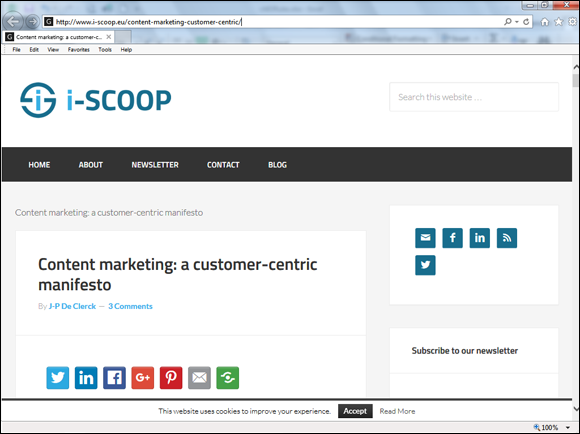
FIGURE 1-9: I-Scoop.
De Clerck cites Peter Fader’s book Customer Centricity: Focus on the Right Customers for Strategic Advantage (Wharton Digital Press), which says that customer centricity means focusing on the high-value customer and marketing to that segment. This is not to say that you completely ignore your other customers. It means that you focus a great deal of effort on the customers with the highest potential customer lifetime value. Customer lifetime value (CLV) refers to the profit you expect to make over the lifetime of a specific customer.
Monetate’s infographic cited in the article is found here (https://www.monetate.com/infographic/what-does-it-mean-to-be-customer-centric). (See Figure 1-10.) Monetate is a customer analytics firm.
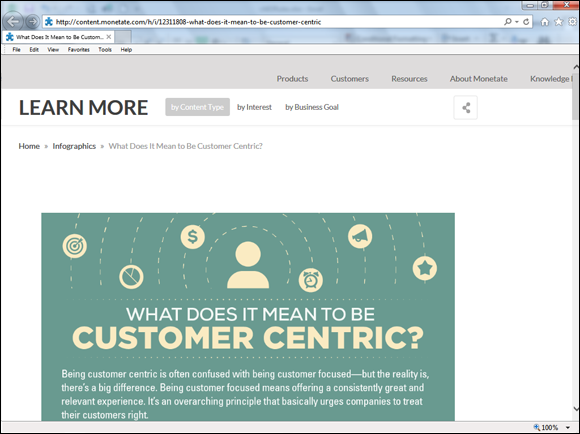
FIGURE 1-10: Monetate’s Infographic showing what it means to be customer centric.
So what should you do regarding customer service content after you identify these high-CLV customers? You should create content that addresses their specific needs and distribute it on the following:
- Support sites: Look at the content you provide for support sites. Is it dull and boring? Your customers want to be entertained as well as educated. Think about how you can make this content more appealing.
- Social media platforms: You may already answer support questions on these sites, but do you provide links to interesting help content? Probably not. Try to think about putting links to all the content you create for your customers.
- Guest postings: You’re probably not thinking about customer service when you send guest posts. But aiming your post toward customer service isn’t hard to do. Just make it something that is “in service” to the reader.
- Webinars: You likely have webinar content that serves customers. Repurpose it as podcasts or video to spread your message.
Your strategy should include content targeted at helping your most valuable customers find the information they need.
Dipping into User Design and Habits
Two additional issues to be aware of when you’re constructing your content marketing plan are the user experience (UX) and your customer’s habits. Both are related to content in a very specific way:
- The UX: This UX is not about the buyer journey that the user takes on the road to making a purchase. (The buyer journey is covered in Book 2, Chapter 3.) The UX is the experience the user has while navigating your sites and reading your content. It’s about the design elements you employ to communicate your content marketing strategy.
- Habits: Your customer’s habits impact the adoption of your product. When you know how to attach the use of your product to customers’ habits, you’re more likely to persuade them to buy. The content you create to get your customers on board with your products will have a big effect and must be part of your strategy.
Read on to find out how both of these issues impact your content.
Recognizing the importance of UX design in your strategy
When you think of developing a strategy, issues about design probably don’t immediately come to mind. Yet when you look at conducting business online, you can find evidence of design choices in everything you do. Not only is the product itself impacted by design, but the way you have customers interact with the brand is completely driven by design.
This point in driven home by John Moore Williams in his article, “The New Design Process: Why Designers Should Be Shaping Business Strategy,” in the InVision blog (http://blog.invisionapp.com/why-designers-should-be-shaping-business-strategy/).
Williams makes a very important point that’s worth quoting in full: “Designers understand the business landscape differently than the business guys. Where an exec sees lifts in conversion rates, a designer sees a more delightful user experience. Where an exec sees increased time on site, a designer might wonder if some interactions could produce less friction. Where the business guy sees users, designers see people.”
Are you guilty of the narrow vision that Williams describes? You do need to think about metrics. But the key is to keep an eye on metrics and the UX at the same time. Your user experiences content visually, and design either impedes or enhances that experience — and enhancing it makes all the difference.
Observing product habits
Most habits develop without you realizing it. You perform some of the same routines every day without much thought. In fact, stopping a habit is more difficult than starting one, as you’ve probably discovered.
Having the topic of habits may seem strange in a chapter on strategy, but it really isn’t when you look at how habits impact your customers’ use of your product. Do you know whether using your product requires a habit change? If it does, you’re going to have an uphill battle luring customers. Conversely, if you can attach the use of your product to an existing habit, you will find fostering product adoption much easier.
An interesting perspective on the benefits of habits as they relate to products was discussed by Dina Chaiffetz in her article series on the InVision blog (http://blog.invisionapp.com/how-to-build-habit-forming-products-building-on-the-loop/).
Chaiffetz points out two significant benefits of focusing on habits: (1) when your product establishes a habit, you establish a permanent relationship with a customer; and (2) if you know about a habit your customer already has, you can piggy-back on that to become part of the customer’s routine.
Doesn’t that sound good? Habits can help you develop an ongoing relationship with your customer that will be hard to break, plus you can become a part of your customers’ everyday life.
So how can you add habits to your strategy? Nir Eyal tackles this question in his book Hooked: How to Form Habit-Building Products, in which he presents the four steps to product habit formation.
You can find an example of this process in Nir Eyal’s SlideShare presentation that diagrams how a Pinterest habit is formed at http://www.slideshare.net/nireyal/hooked-model (see slide #110).
Here’s how the Pinterest habit is formed:
- Trigger: First, you need to have both an external and internal trigger that cause you to use the product. An external trigger might be that you’re reading your emails online, so going to another site is easy. The internal trigger could be your boredom or desire to socialize.
- Action: You log in to a social platform and look around for something entertaining.
-
Variable reward: While on the platform, you’re rewarded by discovering something of interest, or sometimes you find nothing and you log off. The key to this reward is that it doesn’t happen every time; it’s on a variable interval schedule.
A variable interval schedule is a concept borrowed from behavioral psychology. It refers to the fact that you’re more likely to keep going back for a reward when your reward is given intermittently, rather than each time you do something. If you’re used to getting a reward every time and then you miss one or two, you will stop going back. If you’re unsure when you will be rewarded because it’s variable, you keep trying again. Slot machines work on the same principle.
- Investment: You make an investment in the product by personalizing it. In the case of Pinterest, you might pin things and share other pins. You’re not only investing your time but also building a body of content, so you’re likely to return.
So now you see how easily a product habit can be formed if it has the right ingredients. It helps you understand why your friends play certain games until they drop. You can find more about habit formation by looking at Stanford Professor BJ Fogg’s work on changing behavior: http://www.foggmethod.com/.